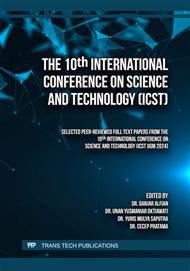p.685
p.698
p.711
p.719
p.729
p.739
p.752
p.765
p.771
A Deeper Analysis of Using Single and Integrated Use of Enterprise Architecture Modeling Languages
Abstract:
Selecting the right modeling approach for Enterprise Architecture (EA) is pivotal for optimizing organizational effectiveness. This paper investigates the use of ArchiMate as a standalone tool versus its integration with UML and BPMN through comprehensive SWOT and SPACE analyses. The SWOT analysis highlights that ArchiMate’s strengths include its simplicity and ease of learning, which streamline user training and implementation. However, its limited scope may not suffice for more intricate scenarios, potentially leading to user dissatisfaction due to its narrower capabilities. Opportunities for improvement lie in leveraging ArchiMate's learnability and exploring hybrid approaches that combine its simplicity with the strengths of other languages. Threats include the growing complexity of enterprise environments and potential resistance from users accustomed to integrated systems. The SPACE analysis underscores ArchiMate's financial efficiency and specialized expertise, making it a valuable choice for less complex modeling needs. In contrast, the integrated approach offers a more robust solution for handling complex environments, providing a strategic advantage through enhanced versatility and detail. This integration supports more nuanced and detailed modeling, aligning better with sophisticated EA requirements. These findings equip organizations with insights to make informed decisions about whether to adopt ArchiMate exclusively or integrate it with UML and BPMN, ensuring alignment with their specific EA needs and strategic objectives.
Info:
Periodical:
Pages:
729-738
Citation:
Online since:
October 2025
Authors:
Price:
Сopyright:
© 2025 Trans Tech Publications Ltd. All Rights Reserved
Share:
Citation:


